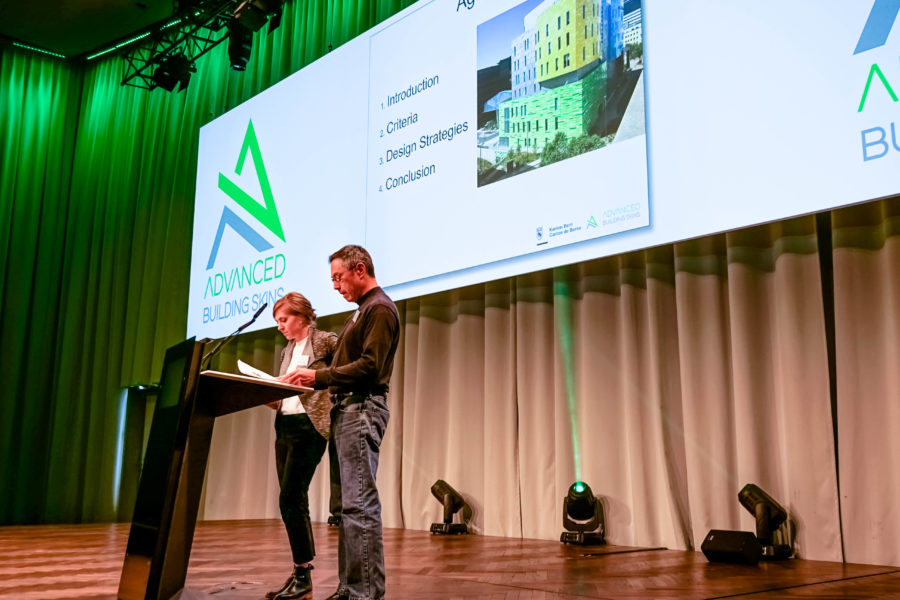Insights
Dec 20, 2018 _ insights
Achieving High Performing Building Enclosures with Readily Available Materials
Today’s technology allows us to push the boundaries of what facades can do and how architecture interacts with the environment. But achieving high performing and sustainable building enclosure systems doesn’t require reinventing the wheel. Using readily available systems, we tailor a sustainable solution for any project.
In their presentation at the Advanced Building Skins Conference in Bern, Switzerland, Mark Lee and Anne Schwab shared GBBN’s design process for the University of Louisville Physicians’ Novak Center for Children’s Health. Their presentation and white paper illustrate how we used readily available means of construction and close coordination of building systems to achieve a high-performance building enclosure. This enclosure creates a comfortable interior for people and will reduce operating and maintenance costs over the life of the building.
Each major decision related to a building’s façade has an impact on sustainability and performance. For the Novak Center for Children’s Health site analysis, energy use simulations, and specific assembly performance analyses informed the building design so that it exceeds the current International Energy Conservation Code within the client’s budget. Our design team placed an equal importance on lifecycle analysis and employed strategies to ensure durability and tenant flexibility over the course of a long building lifespan.
Designing for performance included studying:
- Glazing design strategies to control solar heat gain and glare.
- Cladding design strategies to control basic environmental forces.
- Coordinating HVAC system with the enclosure system for optimal energy conservation.
Click here to read the whitepaper about this design solution.




